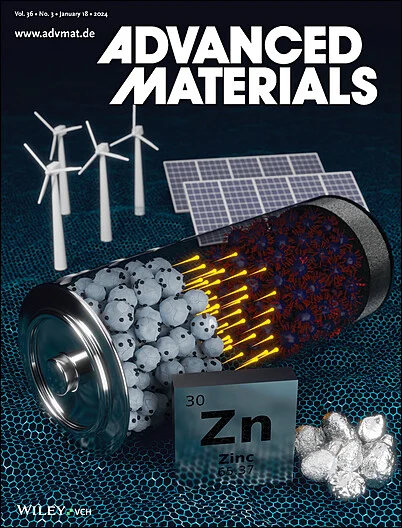Solid Polymer Electrolyte with Compatible Cathode-Electrolyte Interfacial Design Enabling Lithium Metal Batteries Operation at 4.8 V with Long Cycle Life
IF 27.4
1区 材料科学
Q1 CHEMISTRY, MULTIDISCIPLINARY
引用次数: 0
Abstract
Lithium metal batteries (LMBs) with solid polymer electrolytes (SPEs) offer higher energy density and enhance safety compared to the Li-ion batteries that use a graphite anode and organic electrolytes. However, achieving long cycle life for LMBs while enabling the use of high-voltage cathodes required the compatibility between cathode-SPE, rather than focusing solely on the individual components. This study presente a dual-functional poly(ionic liquid) (PolyIL)-based material that simultaneously serves as an SPE matrix and a cathode binder, constructing a cathode-SPE interface with exceptional (electro)chemical compatibility owing to the high ionic conductivity and wide electrochemical stability window. Additionally, a modified cellulose acetate (CA)-based PolyIL substrate, enriched with C═O and ─OH groups, is designed rationally and incorporated to assist the Li+ migration, leveraging their highly negative charge, and enhancing the mechanical strength of the SPE. Furthermore, an in situ polymerization approach is employed to assemble the cells, improving the physical compatibility at the cathode-SPE interface. As a result, the Li||LFP cell demonstrate stable cycling beyond 1100 cycles, and the Li||NCM811 cell reliably operates at a high cut-off voltage of up to 4.8 V.

求助全文
约1分钟内获得全文
求助全文
来源期刊

Advanced Materials
工程技术-材料科学:综合
CiteScore
43.00
自引率
4.10%
发文量
2182
审稿时长
2 months
期刊介绍:
Advanced Materials, one of the world's most prestigious journals and the foundation of the Advanced portfolio, is the home of choice for best-in-class materials science for more than 30 years. Following this fast-growing and interdisciplinary field, we are considering and publishing the most important discoveries on any and all materials from materials scientists, chemists, physicists, engineers as well as health and life scientists and bringing you the latest results and trends in modern materials-related research every week.
 求助内容:
求助内容: 应助结果提醒方式:
应助结果提醒方式:


